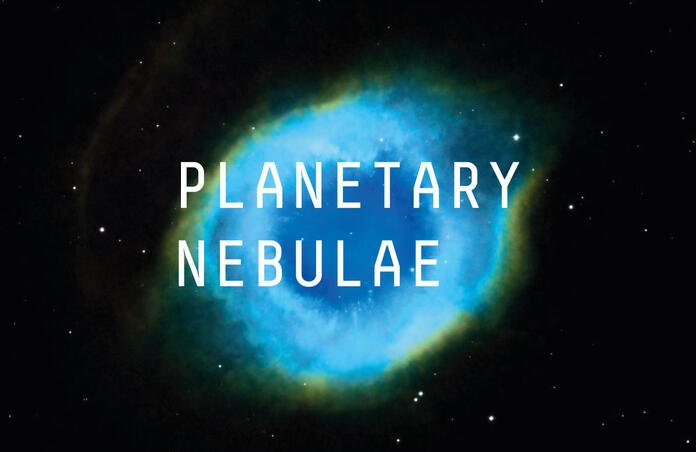What is a Planetary Nebula?

“What is a Supernova” and “What is a Supernova Remnant” described the explosive death of massive stars and what they leave over. The less chaotic end-of-life of stars with lower masses produces equally aesthetic residues: Planetary Nebulae.
As we saw in the “Deep Sky Classification” article, this is the object our Sun will turn into in 5 billion years; there are about 1500 planetary nebulae (PN) that are visible from Earth and it is estimated that 10 000 to 20 000 exist in the Milky Way alone. These objects are rather small compared to other types of nebulae, about 1 light-year in diameter, which partially explains why they are harder to detect; as well they may lie behind interstellar dust cloud. They also have a rather short lifetime, typically 20 000 years before the gas gets assimilated into the interstellar medium.
As the star is its red giant phase, stellar wind pulses eject the outer layers of plasma (hot gas). The remaining core, now a white dwarf, is still very hot, enough to ionize the Hydrogen and other gases, which we observe as the PN. The structure and shapes of PN is still a subject of debate: you might expect a sphere of material around the star, but “butterfly” and elliptical PN are what’s usually observed, sometimes there are more complex shapes.
Another difficult thing to measure is the distance to the PN, the habitual method is to measure its expansion rates in our line of sight and perpendicular to it (i.e., how fast it’s expanding toward or away from us and at a right angle to that), which requires precise spectroscopic observations.
Luckily, the white dwarf at the centre of the PN can usually be observed, which means astronomers can measure its temperature and derive that of the nebula, to know more about the chemical composition and density properties. In the Helix Nebula image above, the inner part of the nebula appears blue and then there is a gradient until the outer red part – this is due to the difference in temperature that the gas is exposed to. Below you can see an image of the farthest detected PN by Chandra X-ray space telescope – don’t worry, closer nebulae are observable with Telescope Live and in visible wavelengths! You will have guessed that narrowband filters (H alpha, O III, S II) can be used to observe a PN because it’s composed of ionized gas. The example of the Helix nebula above only required 30 minutes of exposure (10 minutes in each of the narrowband filters) as this object is very close to Earth; this is an ideal target for your first astrophotography shoot! And if you’re more experienced, it’s still a must-have in your image portfolio.
Ready to get started? Submit your observation for a PN on the webapp! Don’t hesitate to get in touch if you need more guidance, we’re always happy to help.
Cover image: The Helix Nebula shot in narrowband filters, Francesco Pessolano, October/November 2020 CH-1
Image credit:
1- The Helix Nebula shot in narroband filters, Dörte Krüger, 07/10/2020 CH-1
2- Hot Bubble in PN IC4593, 13/11/2020 Chandra (NASA / CXC / UNAM / J. Toala et al. / STScI.)
